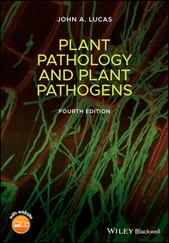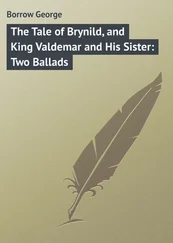12 Maluszynski, M., Kasha, K., Forster, B.P., and Szarejko, I. (2003). Doubled Haploid Production in Crop Plants: A Manual. Dordrecht: Springer.
13 Mohammadi, S.A., Prasanna, B.M., and Singh, N.N. (2003). Sequential path model for determining interrelationship among grain yield and related characters in maize. Crop Science 43: 1690–1697.
14 Murashige, T. and Skoog, T. (1962). A revised medium for rapid growth and bioassays with tobacco tissue culture. Physiologia Plantarum 15: 473–497.
15 Snape, J.W. (1989). Doubled haploid breeding: theoretical basis and practical applications. In: Review of Advances in Plant Biotechnology 1985–1988: 2nd International Symposium on Genetic Manipulation in Crop (eds. A. Mujeeb‐Kazi and L.A. Sitch), 19–30. Philippines: CIMMYT Mexico DF and IRRI Manila.
16 Stefaniak, B. (1994). Somatic embryogenesis and plant regeneration of gladiolus. Plant Cell Reports 13: 386–389.
17 Tae‐Seok, K.O., Nelson, R.L., and Korban, S.S. (2004). Screening multiple soybean cultivars (MG 00 to MG VIII) for embryogenesis following Agrobacterium‐mediated transformation of immature cotyledons. Crop Science 44: 1825–1831.
18 Touraev, A., Forster, B.P., and Jain, S.M. (2009). Advances in Haploid Production in Higher Plants. Dordrecht: Springer.
19 Trigiano, R.N. and Gray, D.J. (eds.) (1996). Plant Tissue Culture Concepts and Laboratory Exercises. New York, NY: CRC Press.
http://aggie-horticulture.tamu.edu/tisscult/microprop/microprop.html– (links to numerous aspects of plant micropropagation).
http://billie.btny.purdue.edu/apomixis/apomixis.html– Excellent overview of apomixis.
http://www.sprrs.usda.gov/apomixis.htm– Comments from foremost scientists in field of apomixis.
http://www.blogontheweb.com/tissue_culture– Excellent discussion on tissue culture.
Outcomes assessment
Part A
Please answer the following questions true or false:
1 The MS medium was developed by Morris and Stevenson.
2 Agar is used as a gelling agent in tissue culture.
3 A protoplast is all the cellular components of a cell plus the cell wall.
4 An auxin‐cytokinin ratio in favor of auxin promotes rooting.
5 Propagation by cuttings is a form of clonal propagation.
6 Diplospory is the most common mechanism of apomixis in higher plants.
7 Facultative apomicts reproduce exclusively by apomixis.
8 Pathogenesis is equivalent to haploidy.
Please answer the following questions:
1 The part of the plant used to start tissue culture is called the ……………………..
2 The MS tissue culture medium is named after ……………… and ……………
3 A mass of undifferentiated cells, such as meristematic cells, is called ………….
4 What is clonal propagation?
5 What is apomixis?
6 Distinguish between apospory and displospory as mechanisms of apomixis.
7 Species that reproduce exclusively (or nearly so) by apomixis are described as …………………………..
8 Give a specific advantage of clonal propagation.
Please write a brief essay on each of the following topics:
1 Why is it possible (at least theoretically) to raise a full plant, or for that matter any organism, from just one of its own cells?
2 All cells are not totipotent. Explain.
3 What it the importance of a callus phase in plant tissue culture research?
4 Discuss the rationale for the composition of a tissue culture medium.
5 Describe the in vitro production of hybrids.
6 Discuss practical applications of tissue culture in plant breeding.
7 Discuss the key breeding implications of clonal propagation.
8 Discuss the benefits of apomictic cultivars in crop production.
9 Apomixis can be a two‐edged sword in plant breeding. Explain.
10 Discuss the occurrence of apomixis in nature.
Конец ознакомительного фрагмента.
Текст предоставлен ООО «ЛитРес».
Прочитайте эту книгу целиком, на ЛитРес.
Безопасно оплатить книгу можно банковской картой Visa, MasterCard, Maestro, со счета мобильного телефона, с платежного терминала, в салоне МТС или Связной, через PayPal, WebMoney, Яндекс.Деньги, QIWI Кошелек, бонусными картами или другим удобным Вам способом.












